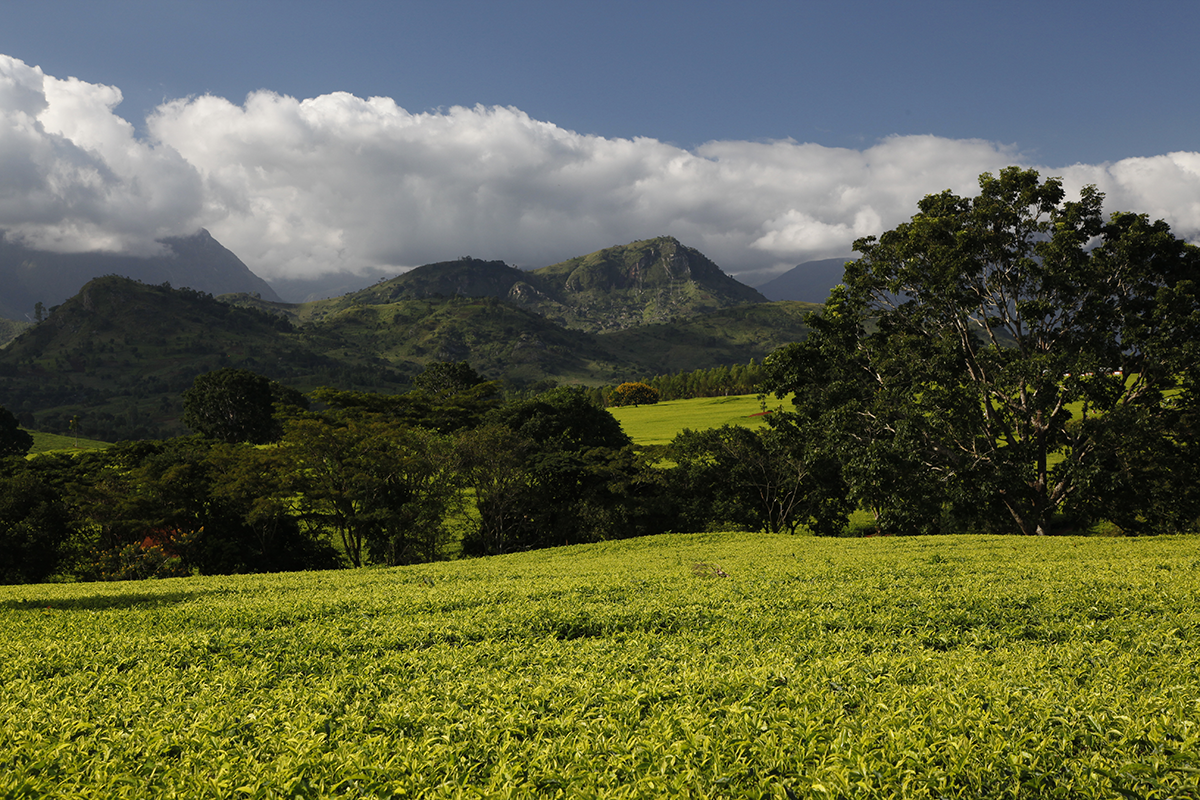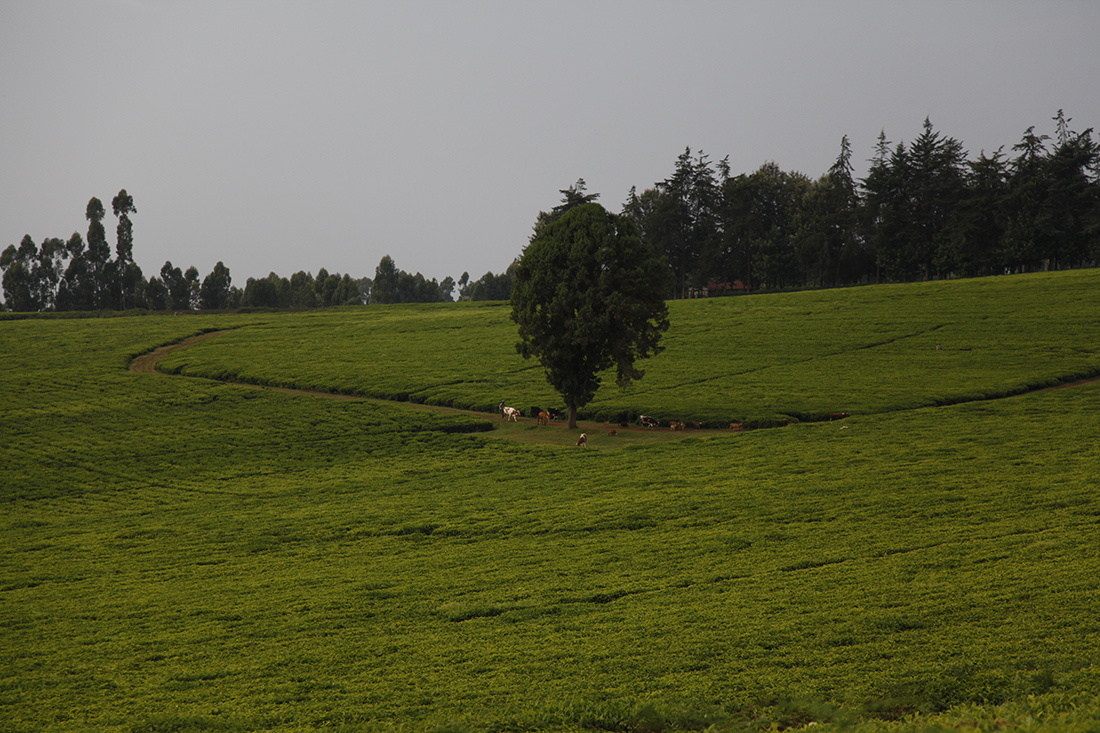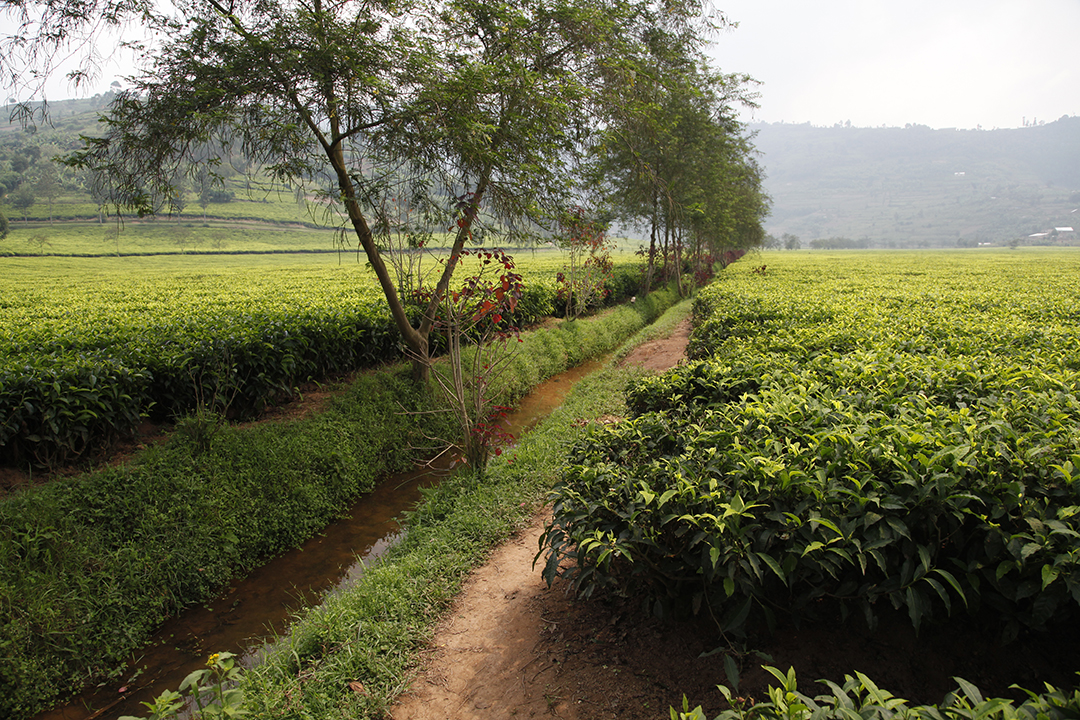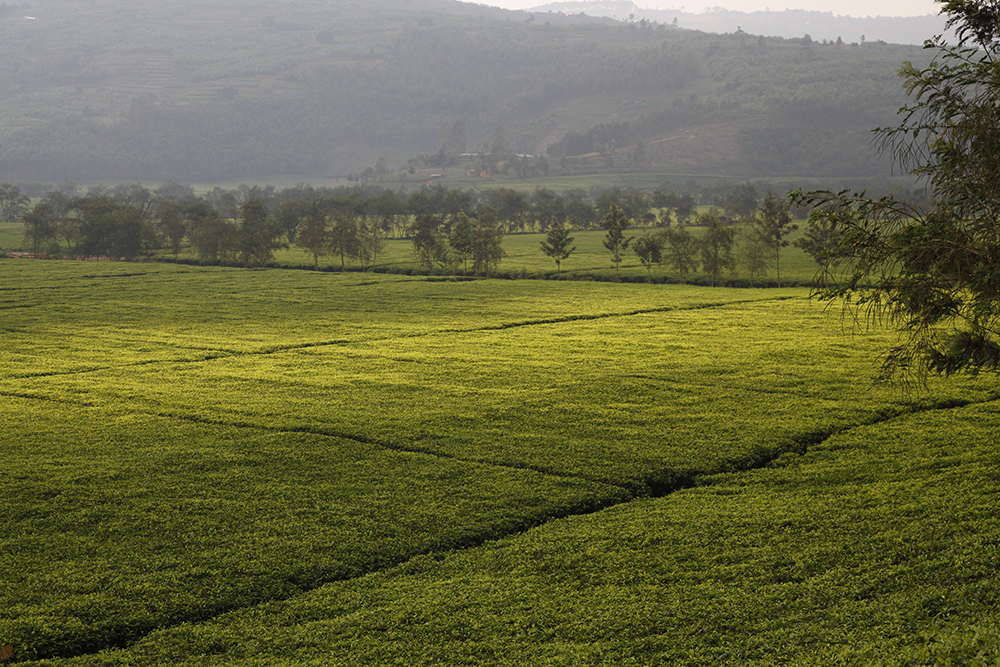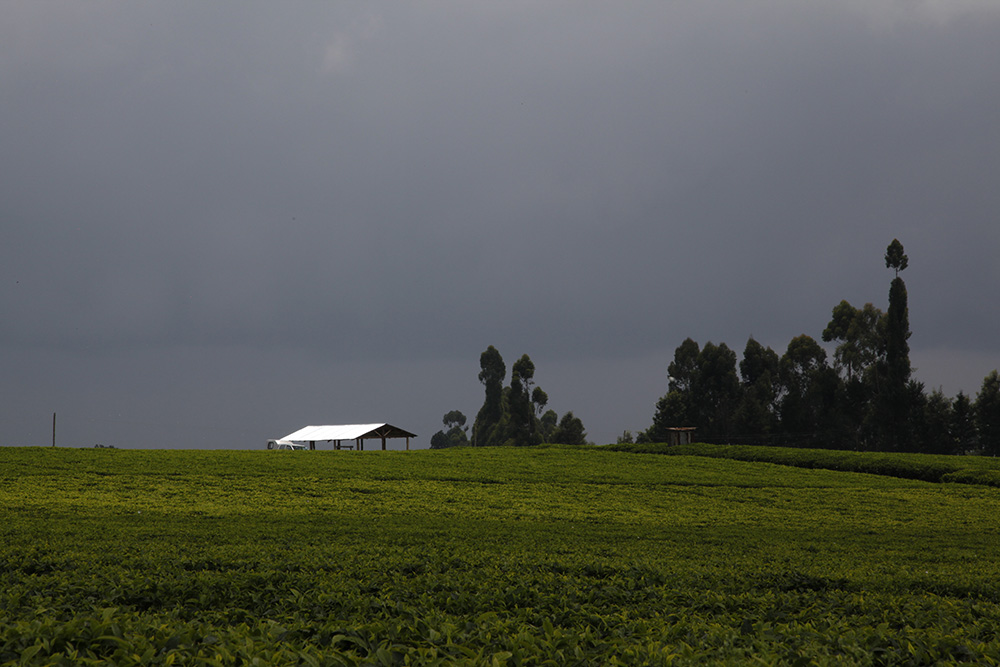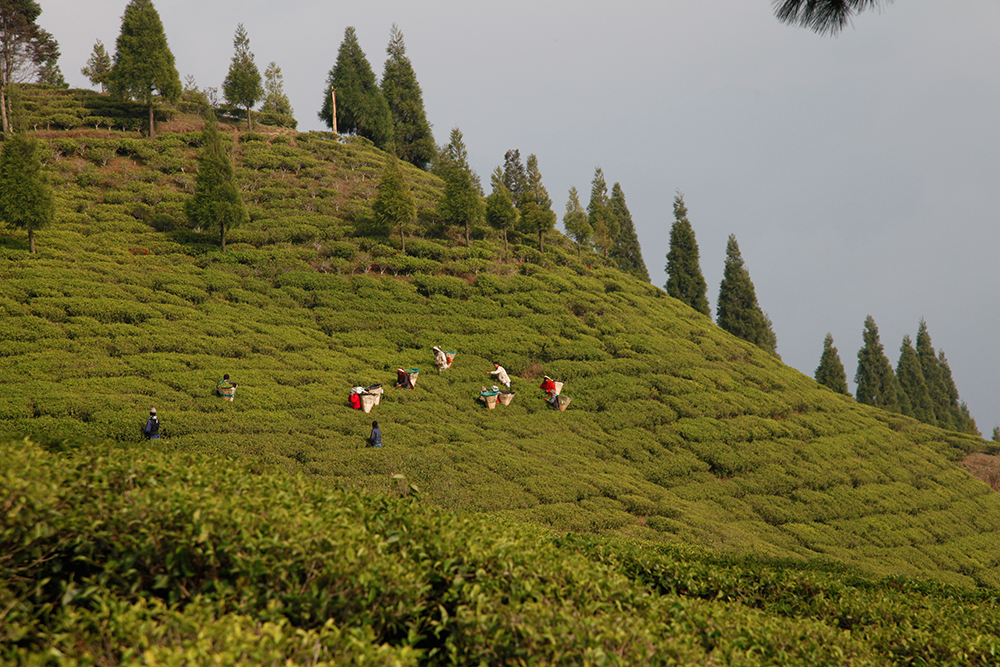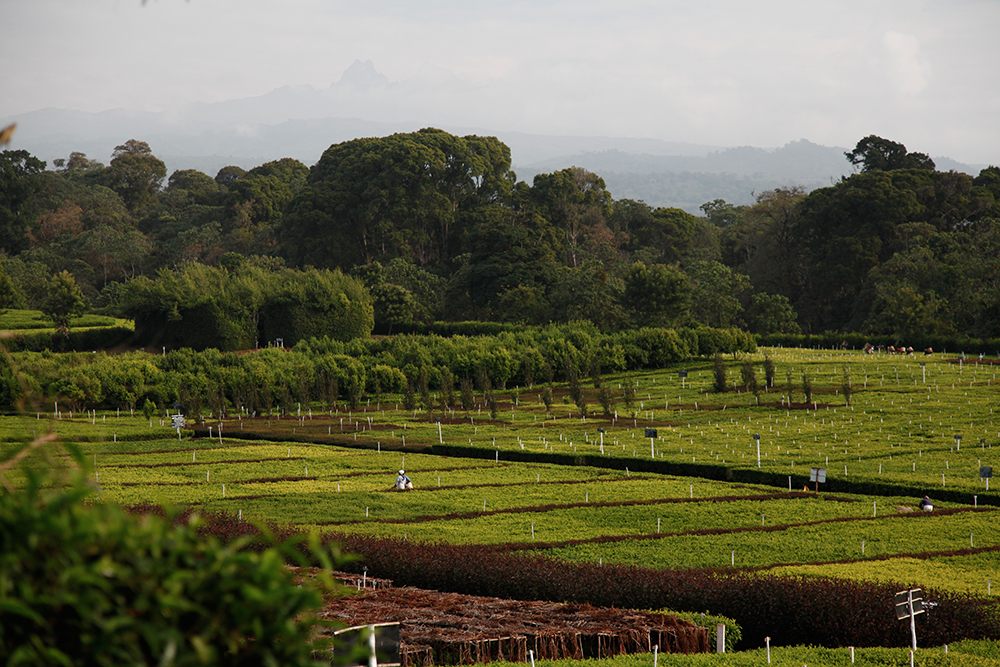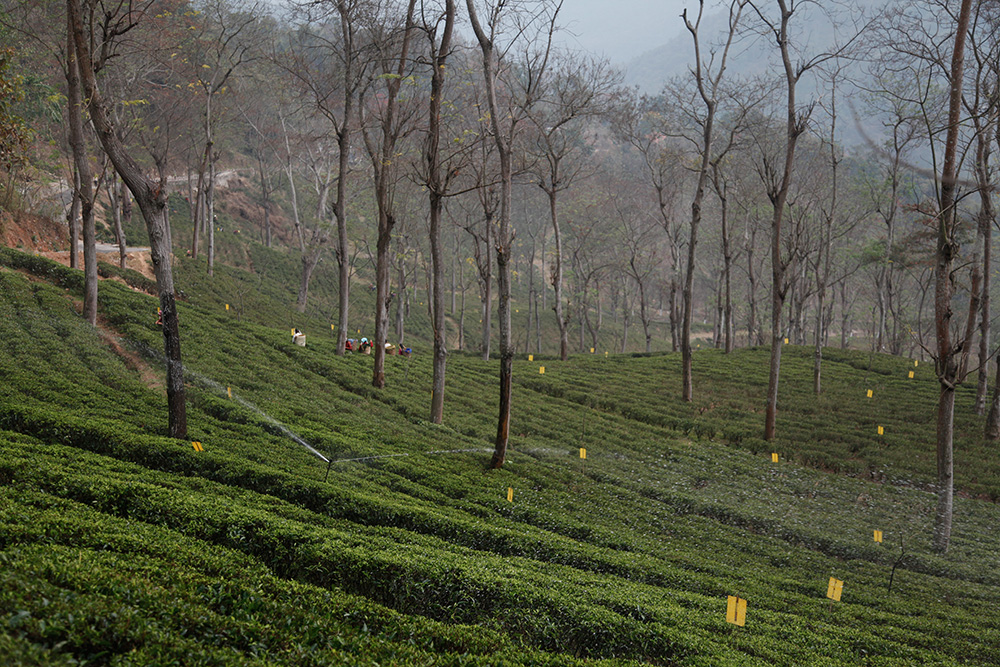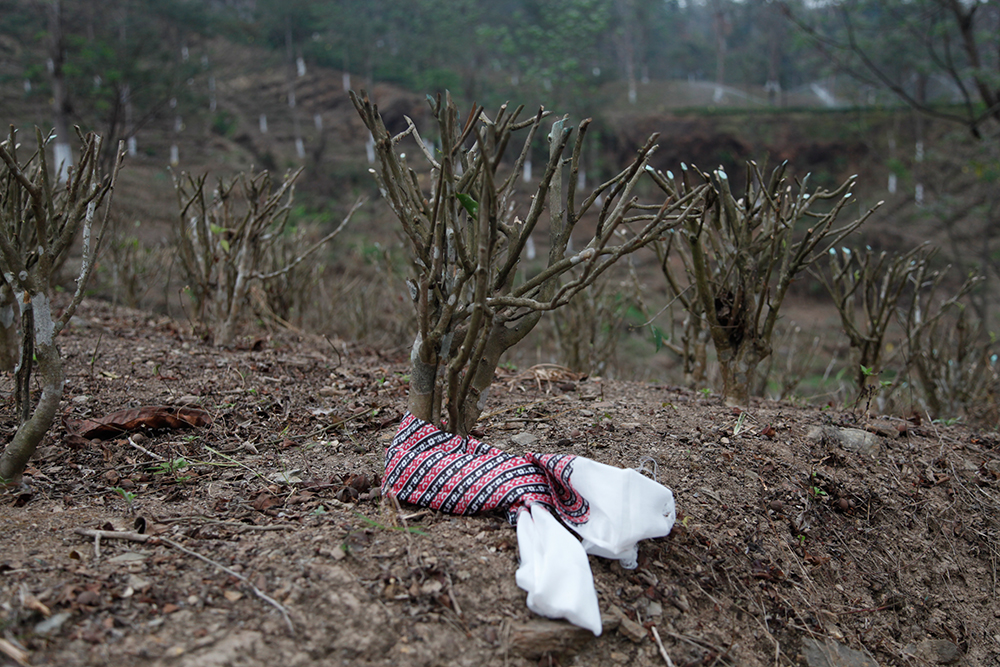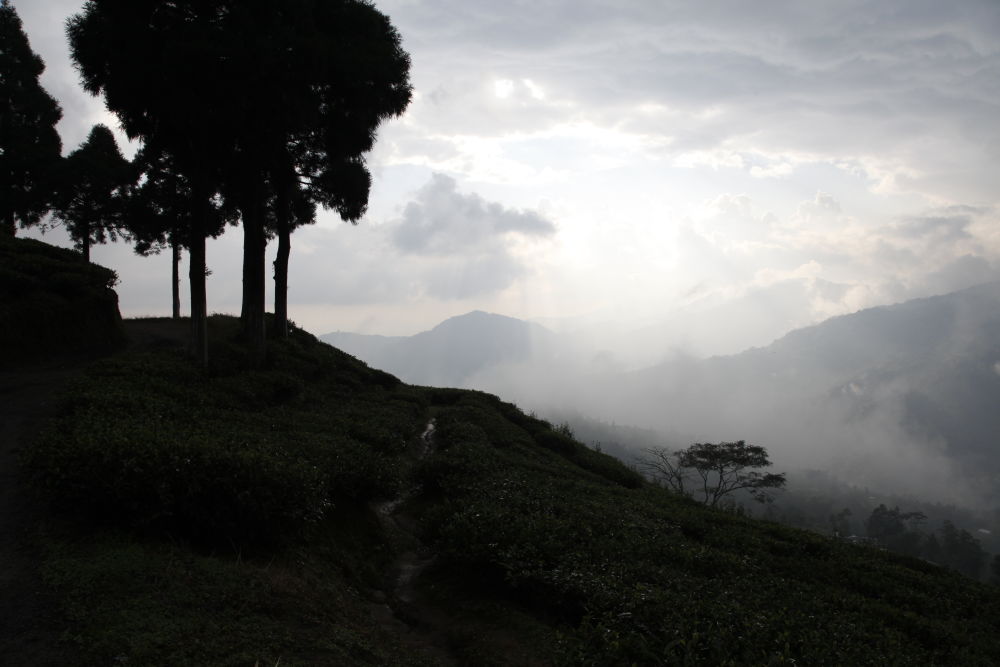I can never get over the beauty of Malawi. Every week, as I prepare for my blog article, I go back over the different photos I like but haven’t yet used here. And it’s always the pictures of Malawi that capture my attention for a long time. The scenery is truly stunning. I know my photo isn’t that good, you can see the tea plants aren’t completely in focus, but the extraordinary light, all those shades of green and yellow, the beautiful blue sky fringed with white clouds, the high plateaus, that wildness extending to the horizon, those soft lines and other, more angular ones… We live in such an incredible world! If we remember to open our eyes and look, of course. And if we aren’t set on destroying it.
Plantation
Altitude, a useful ally
In Kenya, some plantations lie at almost 2,000 metres. At this altitude, insects and fungi that can attack tea plants are particularly rare, due to the low temperatures. So in these conditions, it’s easier to grow teas organically. However, to be certified “organic”, as well as not using prohibited pesticides and fungicides, the soil must be enriched naturally – with compost, for example.
Irrigation and drainage on flat land
Tea plants don’t like to stand in water. When tea is grown on flat land, like here in Rwanda, it’s important to dig out ditches so that the rainwater runs away and doesn’t linger around the camellia’s roots. What’s clever here is that the drainage is designed not only to allow water to run off, but also to irrigate the crops during dry spells. For the system to operate, you need to be near a reservoir, or a river, like here, so the water can be diverted into the channels. The frogs love it, judging by the racket they make, and a whole ecosystem thrives in these damp conditions, including colourful kingfishers, which I’ve startled into flight a few times.
Rwanda: magnificent landscapes, unusual plantations
This year, I’ve been incredibly lucky to visit some beautiful tea plantations, like the ones I went to in Kenya and Rwanda. I’ve seen a lot of tea fields in my life, yet I still discover breathtaking landscapes that resemble nowhere else. For example here, in Rwanda, tea grows not on hillsides, as is often the case, but at the bottom of the valley. The valley in question may lie at an altitude of 2,000 metres, but even so, it’s flat. And it’s still hot enough here for dense vegetation to surround the tea plants. In this “Land of a Thousand Hills” you’ll find incredible scenery, but also some remarkable and little-known teas. If you want to taste the tea that grows here, and feel connected to this beautiful place, it is called “Rwanda Silver Mist“, a powerful tea with fairly fruity, spicy, honey notes. It is a delicious discovery, a door that opens onto a very beautiful corner of our planet.
Tea leaves under a shelter
From the time the tea leaves are harvested to the moment they reach the factory for processing, they must not be allowed to start fermenting, as this could spoil the quality of the tea. So in various locations around plantations there are small shelters built to protect the leaves from rain until they are taken to the factory.
Darjeeling teas and Nepalese teas: two schools
Due to a way of thinking I don’t share, Darjeeling tea producers fear competition from their Nepalese neighbours. They think the latter are copying them and can sell their teas more cheaply, because of their lower production costs.
Yes, Nepalese teas sometimes offer good value for money, but they are not copies of Darjeelings. There are some passionate planters in Nepal who know that their country still needs to prove itself to gain recognition in the world of tea, and as a result, they try to be innovative. In Darjeeling, planters are in a more comfortable position due to their reputation that is often – but not always – merited.
So, they are two different worlds: innovation on one side, tradition on the other. By looking carefully and being highly selective, you can find excellent teas on both sides of the border. And it would be a shame to deprive yourself of either kind.
A premium tea from Kenya
In my teapot this morning, a portion of Mount-Kenya Golden-Leaves is opening up in the water. This is the first premium tea I’ve found in Kenya, and it has just arrived. I love its notes of honey, wood, wax and liquorice. They are warming, and celebrate the end of winter in their own way. They make you want to stay indoors a little longer, warm and cosy. They make you want to breathe in their aromas, cupping the bowl in both hands.
The microclimate of Darjeeling plantations
On the Delmas Bari plantation, where I was a few days ago, some plots were being watered as the ground was so dry. On this Darjeeling slope, which faces Sikkim, it hasn’t rained since October. In other areas, there had been a little rain in the previous days. This difference in climate on plantations barely a few kilometres apart is very specific to Darjeeling. Even on the same plantation there can be considerable variations in weather. Luckily, as we can see in this photo, the tender green buds are starting to grow. On this plot, there will be just one or two days longer to wait before the harvest can start in earnest.
A scarf for a blessing
In India, people sometimes welcome you by placing a silk scarf around your neck and blessing you. At DelmasBari, I was so saddened to see how dry the soil was that, in front of my hosts, I took the scarf that had just been given to me, and I blessed in my turn. I blessed one of the tea plants on the plantation, in the name of all the others, and I prayed for rain to come.
Waiting for rain in Darjeeling
In Darjeeling, where I am at the moment, there wasn’t a drop of rain in January or February. This means most plantations haven’t started to harvest yet. Only the ones with plots at low altitudes, who irrigate their plants, have been able to produce a few batches. But here, the first teas are never the best. In Darjeeling, when you’re looking for quality, you can never be in a hurry.

